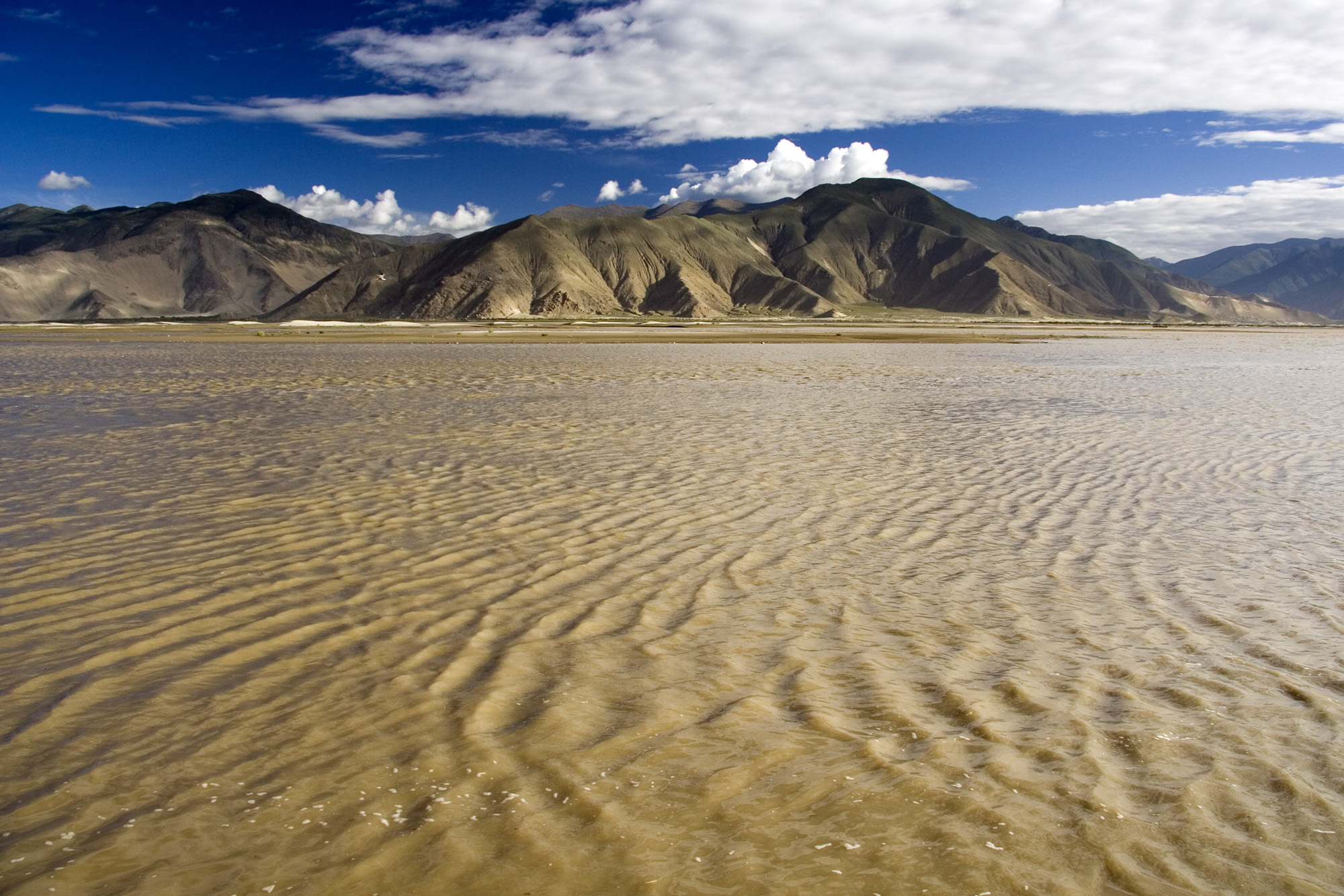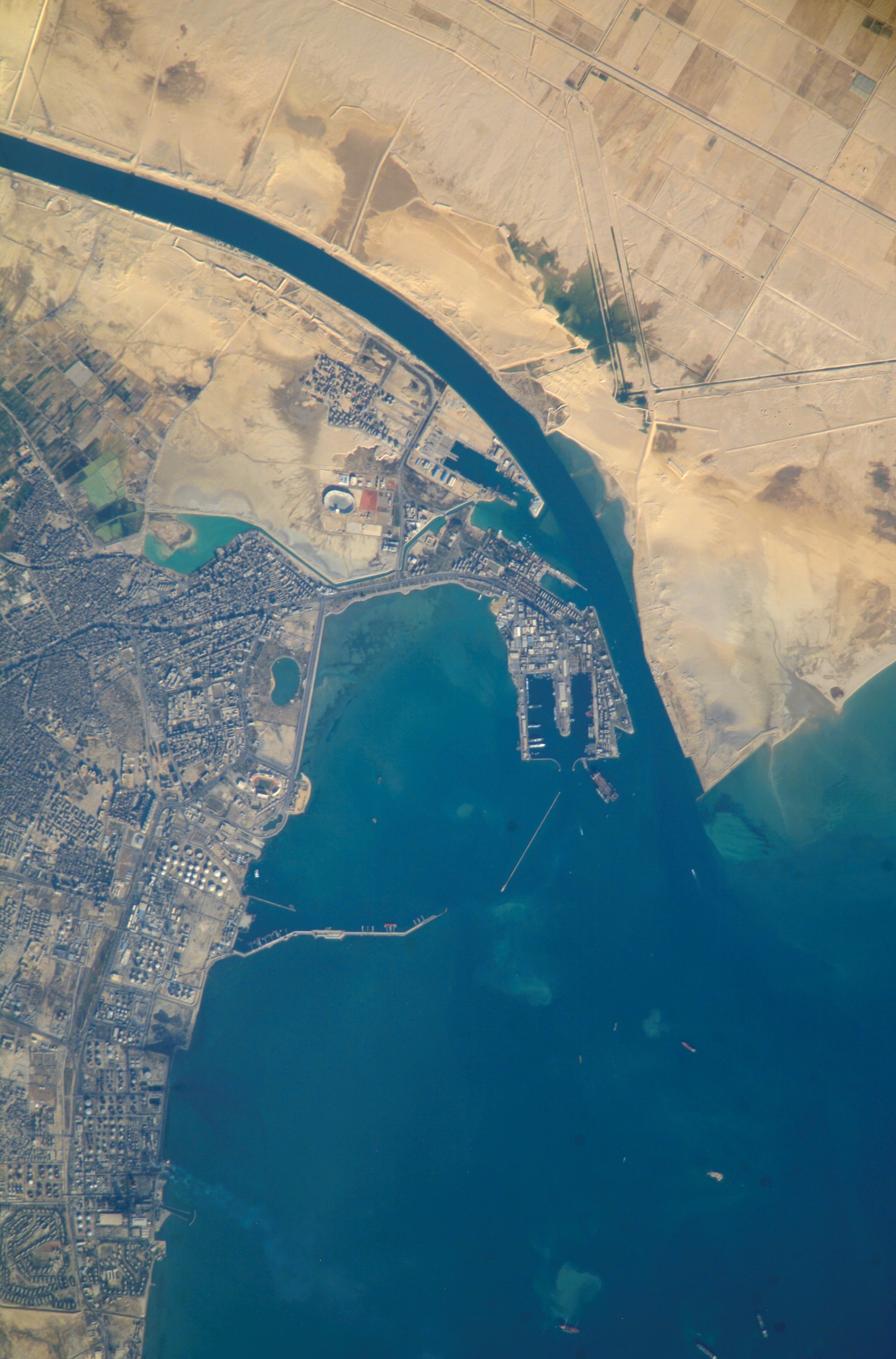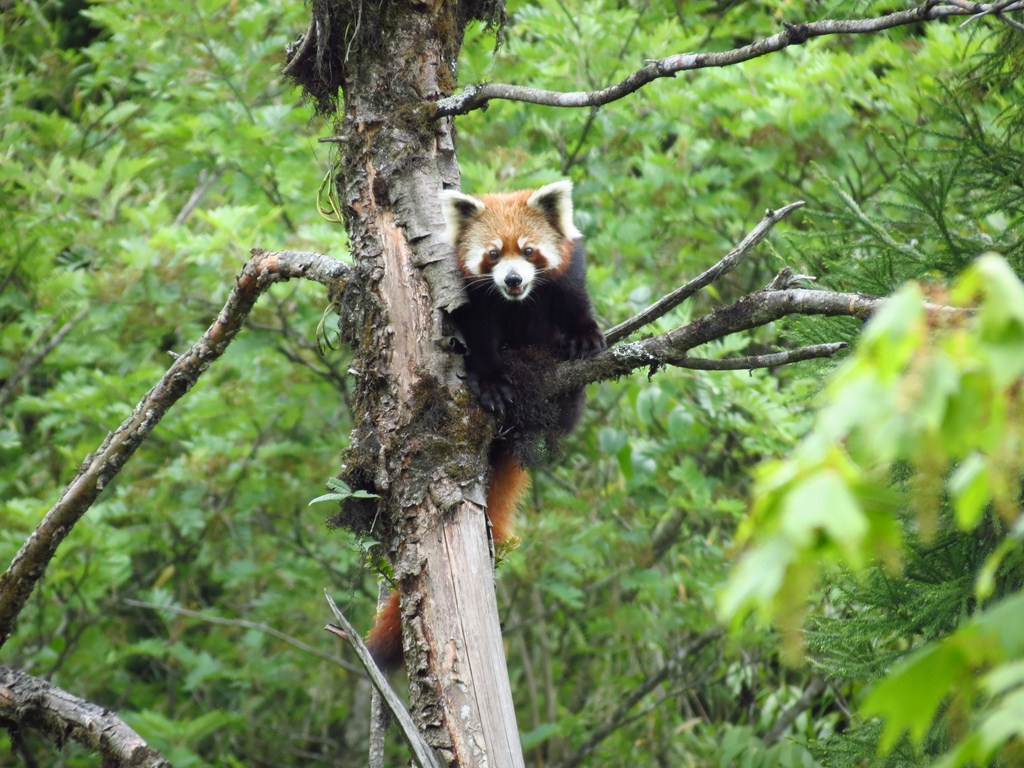|
Jaldhaka River
The Jaldhaka River (Pron:/ˌdʒælˈdɑːkə/) (), also known as Dichu, is a tributary of the Brahmaputra and a trans-boundary river flowing through India, Bhutan and Bangladesh with a length of 233 kilometres. It originates from the Bitang Lake at Kupup, Gangtok district, Gangtok District, Sikkim, near the Jelep La pass below Dongkya Range, Dongkya Mountain Range. It flows through Pakyong District of Sikkim, India and then passes through forests of Samtse District of Bhutan where it flows for around 40 kilometres and then re-enters India at Bindu, Kalimpong, Bindu, Kalimpong district. Further it passes through Neora Valley National Park, Chapramari Wildlife Sanctuary and Gorumara National Park in West Bengal along with cities and towns, like Paren, Gairibas, Jaldhaka, Jhalong, Dhupguri, Falakata, Mathabhanga and flows through Kalimpong district, Kalimpong, Jalpaiguri district, Jalpaiguri and Cooch Behar district, Cooch Behar districts in West Bengal, India before entering Ban ... [...More Info...] [...Related Items...] OR: [Wikipedia] [Google] [Baidu] |
India
India, officially the Republic of India, is a country in South Asia. It is the List of countries and dependencies by area, seventh-largest country by area; the List of countries by population (United Nations), most populous country since 2023; and, since its independence in 1947, the world's most populous democracy. Bounded by the Indian Ocean on the south, the Arabian Sea on the southwest, and the Bay of Bengal on the southeast, it shares land borders with Pakistan to the west; China, Nepal, and Bhutan to the north; and Bangladesh and Myanmar to the east. In the Indian Ocean, India is near Sri Lanka and the Maldives; its Andaman and Nicobar Islands share a maritime border with Thailand, Myanmar, and Indonesia. Modern humans arrived on the Indian subcontinent from Africa no later than 55,000 years ago., "Y-Chromosome and Mt-DNA data support the colonization of South Asia by modern humans originating in Africa. ... Coalescence dates for most non-European populations averag ... [...More Info...] [...Related Items...] OR: [Wikipedia] [Google] [Baidu] |
Brahmaputra
The Brahmaputra is a trans-boundary river which flows through Southwestern China, Northeastern India, and Bangladesh. It is known as Brahmaputra or Luit in Assamese, Yarlung Tsangpo in Tibetan, the Siang/Dihang River in Arunachali, and Jamuna River in Bengali. By itself, it is the 9th largest river in the world by discharge, and the 15th longest. It originates in the Manasarovar Lake region, near Mount Kailash, on the northern side of the Himalayas in Burang County of Tibet where it is known as the Yarlung Tsangpo River. The Brahmaputra flows along southern Tibet to break through the Himalayas in great gorges (including the Yarlung Tsangpo Grand Canyon) and into Arunachal Pradesh. It enters India near the village of Gelling in Arunachal Pradesh and flows southwest through the Assam Valley as the Brahmaputra and south through Bangladesh as the Jamuna (not to be confused with the Yamuna of India). In the vast Ganges Delta, it merges with the Ganges, popularly kno ... [...More Info...] [...Related Items...] OR: [Wikipedia] [Google] [Baidu] |
Debouches
In hydrology, a debouch (or debouche) is a place where runoff from a small, confined space discharges into a larger, broader body of water. The word is derived from the French verb ''déboucher'' (), which means "to unblock, to clear". The term also has a military usage. Geology In fluvial geomorphology, a debouch is a place where runoff from a small, confined space emerges into a larger, broader space. Common examples are when a stream runs into a river or when a river runs into an ocean. Debouching can generate massive amounts of sediment transport. When a narrow stream travels down a mountain pass into a basin, an alluvial fan will form from the mass deposit of the sediment. The four largest rivers (the Amazon, the Ganges, the Yangtze and the Yellow) are responsible for 20% of the global discharge of sediment in to the oceans by debouches. Geography In fluvial geography, a debouch is a place where a body of water pours forth from a narrow opening. Some examples are: where a ... [...More Info...] [...Related Items...] OR: [Wikipedia] [Google] [Baidu] |
Mathabhanga
Mathabhanga is a city along Jaldhaka River and a municipality in Cooch Behar district in the Indian state of West Bengal. It is the headquarters of the Mathabhanga subdivision. Geography Location Mathabhanga is located at . It has an average elevation of . There are two rivers near Mathabhanga. One is Satranga ( Sutunga) and the other is Mansai. On a clear day, the Himalayan range is visible from the city. According to the ''District Census Handbook 2011, Koch Bihar'', Mathabhanga covered an area of 3.71 km2. Area overview The map alongside shows the western part of the district. In Mekhliganj subdivision 9.91% of the population lives in the urban areas and 90.09% lives in the rural areas. In Mathabhanga subdivision 3.67% of the population, the lowest in the district, lives in the urban areas and 96.35% lives in the rural areas. The entire district forms the flat alluvial flood plains of mighty rivers. Note: The map alongside presents some of the notable locations in ... [...More Info...] [...Related Items...] OR: [Wikipedia] [Google] [Baidu] |
Falakata
Falakata is a city and a municipality near Jaldhaka River in the Alipurduar subdivision of the Alipurduar district in the Indian state of West Bengal. Geography Location Falakata is located at It has an average elevation of 88 metres (288 feet). Mujnai is the main river. Falakata is surrounded by rich forests, corn fields and the nearby Kunjanagar Eco-Park. Area overview Alipurduar district is covered by two maps. It is an extensive area in the eastern end of the Dooars in West Bengal. It is undulating country, largely forested, with numerous rivers flowing down from the outer ranges of the Himalayas in Bhutan. It is a predominantly rural area with 79.38% of the population living in the rural areas. The district has 1 municipal town and 20 census towns and that means that 20.62% of the population lives in urban areas. The scheduled castes and scheduled tribes, taken together, form more than half the population in all the six community development blocks in the ... [...More Info...] [...Related Items...] OR: [Wikipedia] [Google] [Baidu] |
Dhupguri
Dhupguri is a town and a municipality of Jalpaiguri district near Jaldhaka River in the state of West Bengal, India. It is the headquarters of the Dhupguri subdivision. Geography General Dhupguri has an average elevation of 80 metres (262 feet), and is a municipality in the Jalpaiguri district. In the foothills of the Bhutanese Himalayas, the Jaldhaka River flows through the west of the town. The Daina, Gilandi, Duduya, Kumlai, Jhumur, and Bamni are other rivers which flow through the town. Area overview The map alongside shows the alluvial floodplains south of the outer foothills of the Himalayas. The area is mostly flat, except for low hills in the Northern portions. It is a primarily rural area with 62.01% of the population living in rural areas and a moderate 37.99% living in the urban areas. Tea gardens in the Dooars and Terai regions annually produce 226 million kg or over a quarter of India's total tea crop. Some tea gardens were identified in the 2011 censu ... [...More Info...] [...Related Items...] OR: [Wikipedia] [Google] [Baidu] |
Jaldhaka
Jaldhaka (also referred to as Jhalong) is a small town in the Gorubathan CD block in the Kalimpong Sadar subdivision of the Kalimpong district in the state of West Bengal, India. It lies on the bank of Jaldhaka River. Geography Location Jaldhaka is located at . Jaldhaka is shown as being a part of Paten Godak Khasmahal mouza in the map of Gorubathan CD block on page 197 of ''District Statistical Handbook, Darjeeling, 2011''. Area overview The map alongside shows the Kalimpong Sadar subdivision of Kalimpong district. Physiographically, this area forms the Kalimpong Range, with the average elevation varying from . This region is characterized by abruptly rising hills and numerous small streams. It is an predominantly rural area with 77.67% of the population living in rural areas and only 22.23% living in the urban areas. While Kalimpong is the only municipality, Dungra is the sole census town in the entire area. The economy is agro-based and there are 6 tea gardens in t ... [...More Info...] [...Related Items...] OR: [Wikipedia] [Google] [Baidu] |
Gorumara National Park
Gorumara National Park (Pron: ˌgɔ:rʊˈmɑ:rə; ''Gorumara Jatio Uddan'') is a national park in northern West Bengal, India. Located in the Dooars region of the Himalayan foothills, it is a medium-sized park with grasslands and forests. Gorumara National Park was established in 1992. It is primarily known for its population of Indian rhinoceros. The park was declared as the best among the protected areas in India by the Ministry of Environment and Forests for the year 2009. ''The Telegraph''. Retrieved 1 January 2022. , the park is open for the tourists after staying closed for months due to the |
Chapramari Wildlife Sanctuary
Chapramari Wildlife Sanctuary (formerly Chapramari Wildlife Reserve, pron: ˌʧʌprəˈmɑ:rɪ or ˌʧæprəˈmɑ:rɪ) is close to the Gorumara National Park. Chapramari is about 30 kilometres from Chalsa and Lataguri in northern West Bengal, India. The total coverage of the forest is 960 hectares. History In 1896, an imperial forest-service administrator D.H.E. Sander first sent a proposal to the-then English-dominated Government of India that could be developed into a tourism centre. The area was declared a national reserve forest in 1895 under the Indian Forest Act. In 1939, the name ''Chapramari Wildlife Reserve'' came to be used, while the Government of India, in 1998, gave it the status of a national wildlife sanctuary. The name of the region comes from 'Chapra', a variety of small fishes found in northern Bengal, and 'Mari', meaning 'abundance'. Chapramari receives waters from the Teesta, the Neora, Jaldhaka and the Murti. Wildlife A large variety of flora and fauna ... [...More Info...] [...Related Items...] OR: [Wikipedia] [Google] [Baidu] |
Neora Valley National Park
Neora Valley National Park is a national park in Kalimpong district, West Bengal, India that was established in 1986. Spread over an area of , it is a rich biological zone in eastern India. It is the land of the red panda in the pristine undisturbed natural habitat with rugged inaccessible hilly terrain and rich diverse flora and fauna. It is linked to Pangolakha Wildlife Sanctuary of Pakyong District as well as forests of Samtse District, Bhutan via thick cover of forests. Geography Neora Valley National Park covers an area of with an elevation of . The highest point is Rachela Danda. Much of the park is still inaccessible. It borders Pakyong District and Samtse Bhutan. The Neora River is the major water source for Kalimpong town. Biodiversity Avian fauna listed from this park are of A1, A2 and A3 categories with IBA site code IN-WB-06. The primary biomes inside Neora Vally National Park are: * Sino-Himalayan Temperate Forest of the Eastern Himalayan broadleaf forests Bi ... [...More Info...] [...Related Items...] OR: [Wikipedia] [Google] [Baidu] |
Bindu, Kalimpong
Bindu is a village in the Gorubathan CD block in the Kalimpong subdivision of the Kalimpong district in West Bengal, India. Bindu lies in the Indo-Bhutan border, India's second oldest dam is situated at Bindu on River Jaldhaka. It is located 121 km from Kalimpong Town, 103 km from Siliguri City and 85 km from Jalpaiguri city. It takes around 4hrs from Siliguri to reach Bindu. Roadway is the only option to reach Bindu. The roads are good for most part of the journey but during the last 15-20 km it's mostly off-road. As of 2023, a road is under construction by the Border Road Organization and is due to connect Bindu and surrounding area with NH17. Geography Location Bindu is located at . Area overview The map alongside shows the Kalimpong Sadar subdivision of Kalimpong district. Physiographically, this area forms the Kalimpong Range, with the average elevation varying from . This region is characterized by abruptly rising hills and numerous small streams ... [...More Info...] [...Related Items...] OR: [Wikipedia] [Google] [Baidu] |




